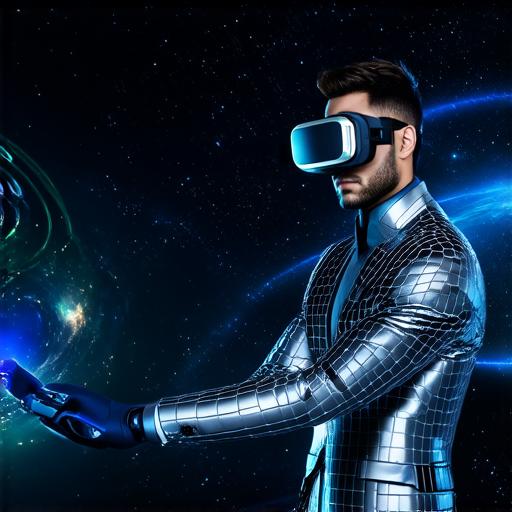
In recent years, virtual reality (VR) has emerged as a revolutionary technology that provides users with an immersive experience. With VR, users can interact with digital content and each other in a simulated environment.
What is Virtual Reality?
Virtual reality is a computer-generated simulation that creates a fully immersive experience for the user. It combines advanced hardware and software to create a 3D environment that responds to the user’s movements in real-time. The user wears a headset or goggles that tracks their movements, allowing them to interact with the virtual world as if they were physically present.
Virtual reality technology first emerged in the 1960s but has only become widely adopted in recent years. Today, VR is used in a variety of applications, from gaming and entertainment to education, training, and healthcare.
How does Virtual Reality Work?
The virtual reality experience begins with the user putting on a headset or goggles that are equipped with sensors and cameras. These devices track the user’s movements, including their head position and eye movement, allowing the VR system to adjust the simulated environment accordingly.
Once the user is fully immersed in the virtual world, they can interact with it using a variety of devices such as hand controllers or specialized gloves that allow them to manipulate objects and perform actions within the simulation.
The virtual reality experience is created using advanced computer-generated graphics (CG) technology. CG technology allows for the creation of highly detailed and realistic environments, characters, and objects that respond to the user’s actions in real-time.
One of the key elements of virtual reality is its ability to provide a sense of presence. This is achieved through the use of stereoscopic displays, which create a 3D image that mimics the way our eyes work in the real world. Additionally, the use of haptic feedback, such as vibrations or force feedback, can further enhance the user’s sense of immersion.
Virtual Reality Applications
Virtual reality technology has a wide range of applications across various industries. Some of the most common applications include:
- Gaming and Entertainment: Virtual reality is revolutionizing the gaming industry, providing users with an unparalleled level of engagement and interaction. With VR, users can explore new worlds, engage in epic battles, and experience immersive storytelling in ways that were previously impossible.
- Education and Training: Virtual reality provides a safe and controlled environment for students to learn and practice skills in a realistic setting. This technology has been used in fields such as medicine, aviation, and military training.
- Healthcare: Virtual reality can be used for a variety of healthcare applications, including pain management, therapy, and rehabilitation. It can also help doctors and nurses to simulate surgical procedures, allowing them to practice and improve their skills before performing the procedure on a real patient.
- Tourism and Hospitality: Virtual reality can provide tourists with an immersive experience that allows them to explore new destinations and cultural experiences in a safe and controlled environment.
- Architecture and Design: Virtual reality can be used to create realistic simulations of architectural designs, allowing developers and designers to visualize and test their ideas before building them in the real world.
- Engineering and Manufacturing: Virtual reality can provide engineers and manufacturers with a simulated environment that allows them to test and improve their designs before building them in the real world. This technology can also be used for assembly line training and quality control.
Virtual Reality Future
Virtual reality technology is still in its early stages, and it is likely that we will see significant advancements in the near future. As the technology continues to evolve, we can expect to see more widespread adoption across different industries. The potential applications of VR are virtually limitless, and as the technology becomes more accessible and affordable, we can expect to see even more innovative uses.
In conclusion, virtual reality technology is revolutionizing the way we interact with digital content and each other. With its ability to provide an immersive experience that combines advanced hardware and software, VR has a wide range of applications across various industries. As the technology continues to evolve, we can expect to see even more exciting possibilities and uses.
